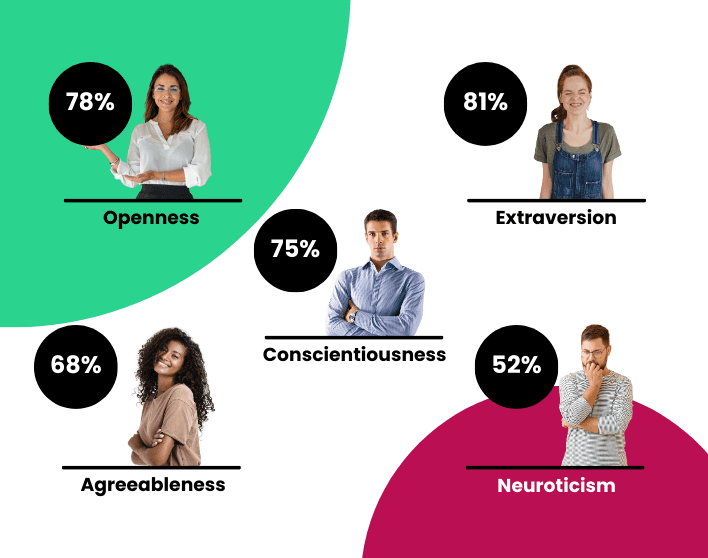The Bryq Team
HR Experts
While many organizations assume that they run fair hiring processes, this isn’t always the case. That’s due to a tricky thing called unconscious bias. Unconscious bias causes an adverse impact in hiring, unfairly discriminating primarily against women and those of color. But it doesn’t have to be that way. By becoming conscious of the unconscious biases our recruitment processes reinforce, we can work to change them. This article offers you 10 ideas for how to make it happen.
What is an Adverse Impact in Hiring?
The EEOC commission (equal employment opportunity commission) offers us a definition of adverse impact. They describe it as when a company hires or promotes at a significantly different rate to the disadvantage of certain groups. These groups are often races or genders.
It’s not only hiring where people may be discriminated against. It can also happen in training, promotions, layoffs, and job advertising. Usually, the adverse impact is a byproduct of unconscious bias. That means that the people who are discriminating against others don’t even realize that they are doing it. But that doesn’t make it okay, and it certainly needs to change.
The EEOC has worked to develop guidelines that can help companies comply with regulations which prohibit discriminatory practices. The types of discrimination that are not allowed are those based on:
Sexual orientation
Religion
Color
Gender
Race
And other protected groups
10 Ideas to Eliminate Adverse Impact in Hiring and Selection Processes
Here are some ideas that you can implement in your workplace to eliminate adverse impact in hiring and selection.
Job Analysis
The first step in ensuring that you hire someone only based on whether they have the right skills for the role is to determine what exactly those skills are. That’s why starting with a thorough job analysis is a great way to start eliminating adverse impact in hiring.
Go over the job description and define specifically which skills and abilities are required to perform the role. If you’re hiring based on any other qualities apart from what the job requires, the risk of adverse impact will go up drastically.
Job Description
The job description should be reviewed as standard practice before you advertise a role. When you review it this time, you should check for any discriminatory language, whether intentional or not. Make sure that the job description focuses on
Inclusive terms which are gender-neutral ‘they shall’
Appealing to a broad range of people
Separating preferred requirements from essential requirements
Clear and easy to understand language
Data Analysis
It is wise to check how your company is currently tracking with hiring diverse people. Find out how many applications you have had from different minorities, and what percentage got hired. This will help you to see the current level of adverse impact in your selection processes.
Pre-Employment Testing
If you don’t currently perform pre-employment testing on job candidates, it might be time to start. Tests such as cognitive ability assessments and personality tests can be a useful tool to avoid adverse impact in hiring processes.
These types of tests allow you to choose new employees based on their ability to do the job rather than anything else. You will get the test results and choose who to interview based on the scores.
Create a Consistent Process
If you ask different candidates different job interview questions, this is a problem. These types of unorganized employment practices can lead to discrimination. As all candidates did not have the chance to answer the same questions, they were not given equal opportunity to get the role. To make sure that your hiring practices are fair, provide a consistent process for every applicant.
Broaden Your Talent Pool
By using new recruitment strategies, you can appeal to a whole different group of people. Using new ways of job advertising can help you to hire a more diverse workforce. For example, not all people would think to look for a job on a job board. Instead, you could try posting on social media, using magazine ads, and other ideas to widen your talent pool to a new range of people.
Four-Fifths Rule
What is the four-fifths rule? This a concept for measuring how fair your hiring processes are. People from any group should have a success rate of around 80% compared with any other group. To figure out whether you are adhering to the four-fifths rule, you start by taking the group with the highest selection rate. Divide the success rate of another group by the success rate of this group. Your answer should be no less than 80%.
Use Diverse Recruiters
If your recruitment team is not diverse, then that makes it far easier for unconscious bias to overtake the process. If you want to minimize adverse impact, your hiring team needs to be as diverse as your applicants. As the hiring manager, you will surely be on the interview panel. What you need to do is select two people quite different from yourself to make up the rest of the panel. This will offer a diverse range of views on the potential job candidates you are interviewing. This can help you to hire a more diverse range of people.
Video Interviewing
Ever wished that you had time to interview a broader range of people? Thanks to technology, now you can, without it eating up all of your time. There is a type of video interview software that you can use to have your candidates prerecord their response to questions. You can log in and view these when it suits you. This is a handy tool for the first round of interviews that will save you plenty of time while interviewing more candidates. All this is achieved while remaining completely objective as everyone is sent the same questions.
Set Goals
What do you want to achieve at the end of this process? What does the elimination of adverse impact in hiring look like to you? For you to do this successfully, you will have to answer these questions and set goals accordingly. Whether you decide that you want to adhere to the four-fifths rule or set your sights higher, goals will be vital for keeping you on track.
By trying some new recruitment techniques and reviewing your processes, it is possible to minimize the adverse impact in hiring. Hire more diverse teams with a range of views that will help lead your company to success.








